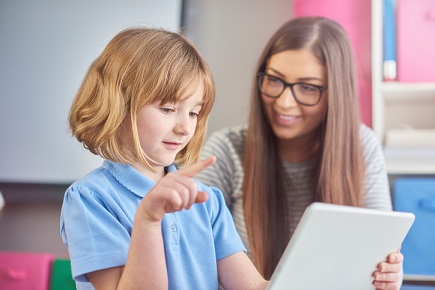
The advent of online learning has radically changed the way classrooms work – not just at school, but right throughout the education system.
While some say this change has happened too fast and been at the detriment of student outcomes, there is evidence it is having a profoundly positive impact on a whole-of-school level.
On Wednesday 30 May, a K-12 panel discussion, titled: ‘Increasing student engagement with online learning’, will explore this topic through the insights of four expert panelists.
One of them is Bobby Pedersen, blended learning leader at the Tasmanian Department of Education, who said online engagement is important for today’s educators and students for many reasons.
“Some of these include: it’s fun and relevant to their lives; classroom time can be used more effectively; differentiation can be made easier and students are more active with their learning,” Pedersen told The Educator.
“There are also lots of opportunities for creativity and less paperwork as it can streamline the learning with resources and links in the same space – and my favourite: connections are made with families and the whole learning community.”
According to Pedersen, a solid and reliable LMS can significantly help to streamline teaching and learning.
“An LMS is a one stop shop for links, resource organisation, discussions, assessments, spaces to collaborate, the facility to differentiate and personalise learning in a variety of ways without getting lost, the potential to embed other tools such as a padlet,” she said.
“This gives so much scope to teachers, leaders, students and families. If the LMS is trustworthy and intuitive teachers will use it more, they will feel confident with searching for then embedding other tools.”
Terence Priester, eLearning leader and English teacher at Newington College, said online engagement “is no less important than face-to-face engagement”.
“In my practice, the students who are disengaged from online resources and our LMS are proportionally disengaged in class. I also find their level of achievement often matches their level of online engagement,” Priester told The Educator.
“In the simplest terms, just being engaged with accessing the materials I post in my Canvas class orients the students with where we are in class.”
Lauren Sayer, director of learning technologies and digital design at Haileybury, said collaborative and augmentation technologies are the most needed to support teaching and learning in the classroom.
“Students need to be able to collaborate with the peers and their teachers 24/7 and learning resources need to not just replicate textbooks but augment content so that we can visualise and interact with resources like we have never done before,” Sayer told The Educator.
As for how technology can allow schools to scale student engagement beyond the physical classroom, Sayer said video learning is playing a big part.
“I feel that video learning is changing the way we engage in online environments beyond the classroom,” Sayer said.
“Being able to video and provide feedback at the point of need in video allows a practical and easily grasped method of assessment for students.”
For more information about the online learning panel discussion, please click here.
Related stories:
Education sector unprepared for new digital laws
Cybersafety tool protects kids at school and home


